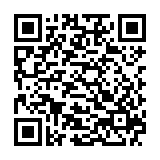When it comes to designing digital experiences for global audiences, one thing is clear: language plays a huge role in shaping the user experience (UX) and user interface (UI). As brands expand into international markets, the way they use language on their websites, apps, and digital products can make or break the user’s experience. In this article, we’ll explore language in UX/UI design, why it matters, and what you can do to create a seamless, user-friendly experience for audiences around the world.
Why Language in UX/UI Design Matters
Language isn’t just about words—it’s about how people understand and interact with those words. When designing digital experiences for international users, the way you communicate can affect everything from how easy it is for them to navigate your site to how likely they are to convert into customers.
Here’s why language matters so much in UX/UI design:
- Clarity and Understanding: Different languages have different structures, idioms, and expressions. A direct translation of a phrase may not always make sense in another language, leading to confusion or frustration.
- Cultural Context: Words and phrases carry cultural weight. What’s appropriate and common in one country may be awkward or offensive in another. Language that respects these differences helps create a more welcoming, inclusive experience.
- Trust and Connection: When users interact with a website or app in their native language, they’re more likely to trust it. It shows that the brand cares enough to cater to their needs and preferences, which can lead to stronger brand loyalty.
How Language Impacts UX Design
UX design is all about creating an intuitive, seamless experience for users. When you add multiple languages to the mix, things get more complicated, but also more rewarding. Here’s how language can shape UX design:
1. Navigation and Structure
Different languages have different word lengths and reading habits, which can influence how you design navigation menus, buttons, and layouts. For example:
- Word Length: Some languages, like German, tend to have longer words, while others, like Chinese, use shorter characters. This can affect button sizes, text boxes, and menu design.
- Reading Direction: Languages like Arabic and Hebrew are read from right to left (RTL), which means your layout and interface need to adjust accordingly to ensure a smooth experience for these users.
Making sure your design can adapt to different languages while still being clear and easy to navigate is essential to a positive UX.
2. Localization of Content
Localization goes beyond translation—it involves adapting the content to fit the cultural and linguistic nuances of each target market. For example:
- Images and Icons: Certain images or icons may have different meanings in different cultures. What’s considered a positive symbol in one country might be offensive in another. Localizing images and icons ensures they align with the local culture.
- Tone and Formality: Different cultures use language in varying degrees of formality. In some languages, like French or Spanish, there are multiple ways to say “you” depending on how formal the situation is. A more casual tone might work for a younger audience, while a formal tone may be better for a professional setting.
The language you choose should align with the audience’s expectations and cultural norms.
3. Error Messages and Microcopy
Microcopy refers to the small bits of text on a website or app—like error messages, notifications, or tooltips. It’s easy to overlook, but these tiny details play a major role in UX. Here’s why:
- Error Messages: When users make a mistake, an error message should provide clear guidance on how to fix it. But language barriers can lead to confusing or overly technical error messages. Ensure that your messages are simple, direct, and easy to understand, no matter the language.
- Microcopy: From “Sign Up” buttons to tooltips explaining how to use a feature, microcopy needs to be carefully considered for each language. What works in English might not work in other languages, so make sure your microcopy is localized to feel natural and appropriate.
How Language Impacts UI Design
UI design focuses on the look and feel of the interface—everything from the buttons to the layout and colors. Language impacts UI design in a few key ways:
1. Text Expansion and Contraction
As mentioned earlier, different languages take up different amounts of space. For instance, “Submit” in English is short, but in languages like German, it could be longer, like “Absenden.” This text expansion or contraction can change the way your UI looks. If your buttons or text boxes aren’t flexible enough, you might end up with text that’s cut off or unreadable, leading to a poor user experience.
2. Font and Typography Choices
The font you choose for your design might work well for one language but not for another. Some fonts may not support characters from languages like Chinese, Arabic, or Russian. Plus, some languages require more space between letters or need different character sizes.
To avoid problems, ensure that the fonts you use are legible in multiple languages and are compatible with all the characters and symbols your audience may need.
3. Visual Design and Localization
Colors, shapes, and symbols have different meanings in different cultures, so the visual design of your UI should be adaptable for different markets. For example:
- Colors: While white is associated with purity in many Western cultures, it can symbolize mourning in some Asian cultures. Red may signify luck in China but warning in Western countries.
- Symbols: Symbols like thumbs-up or the peace sign might be widely understood in some regions but have different interpretations elsewhere. In some cultures, a gesture that’s meant to be friendly could be perceived as rude.
Your visual design should take these cultural differences into account to avoid potential miscommunication or discomfort.
Tips for Optimizing Language in UX/UI Design
Now that we’ve covered the impact of language on UX/UI design, here are some tips to help you optimize the user experience for global audiences:
- Prioritize Translation and Localization: Don’t just translate your content—localize it. Work with native speakers to ensure the language feels natural and culturally appropriate.
- Keep It Simple: Simple, clear language is key. Avoid jargon or overly complex sentences, as they can lead to confusion, especially in translated content.
- Test with Real Users: User testing is essential. Get feedback from users who speak the target language to see how well your design works in their language and culture.
- Design for Flexibility: Ensure your UI design can adapt to different word lengths, reading directions, and cultural nuances.
Conclusion: Language Shapes the User Experience
Language is more than just words—it’s a powerful tool that shapes the way users interact with digital products. When designing for global markets, it’s important to consider how language impacts both UX and UI design. By focusing on clarity, cultural sensitivity, and localization, you can create an experience that resonates with users no matter where they are from.
A well-designed, language-optimized product will not only enhance the user experience but also build trust and loyalty with your global audience. So, take the time to understand the role of language in your design and make sure your digital products are ready to welcome users from around the world.





0 Comments